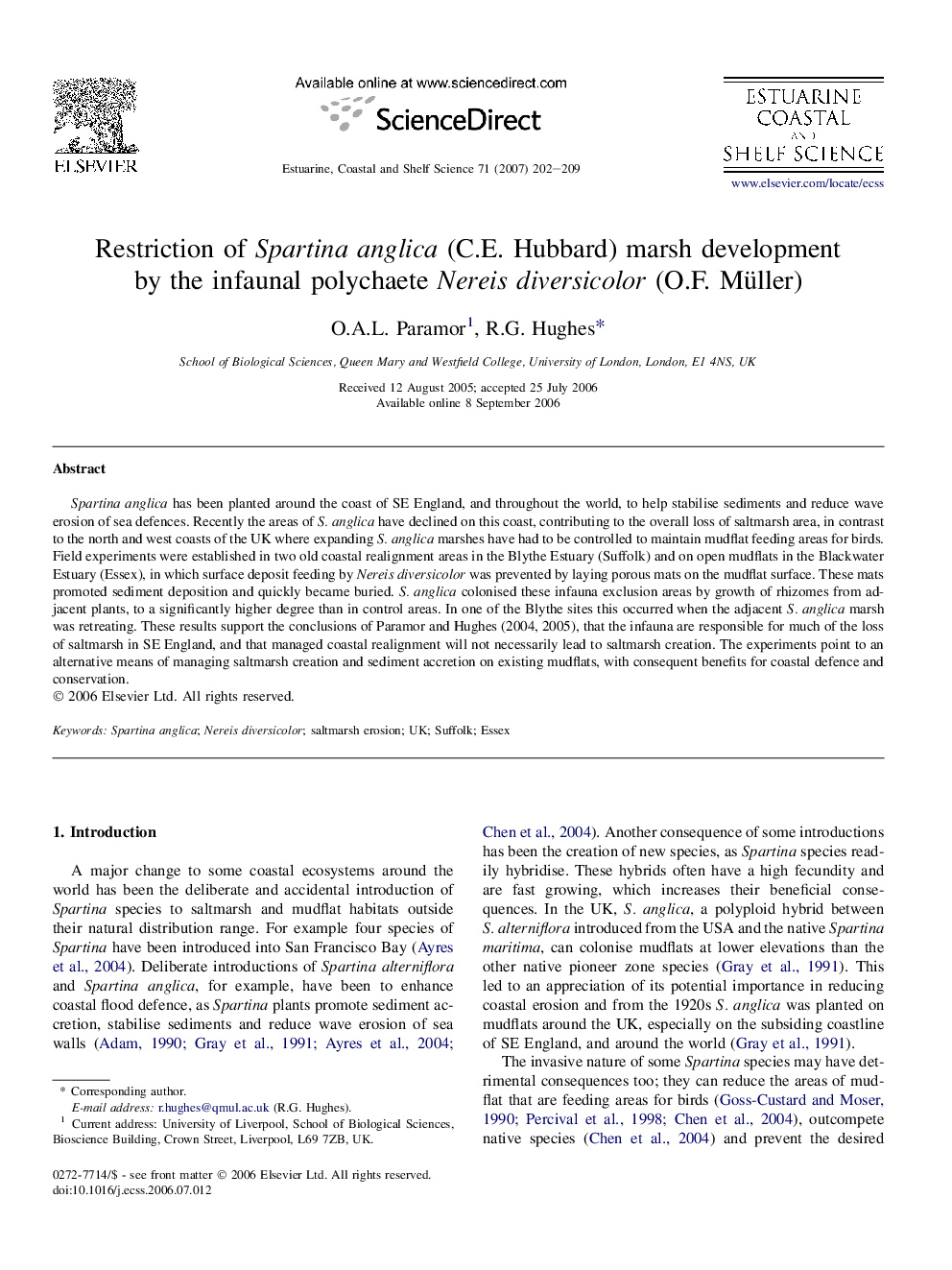| کد مقاله | کد نشریه | سال انتشار | مقاله انگلیسی | نسخه تمام متن |
|---|---|---|---|---|
| 4542061 | 1626707 | 2007 | 8 صفحه PDF | دانلود رایگان |

Spartina anglica has been planted around the coast of SE England, and throughout the world, to help stabilise sediments and reduce wave erosion of sea defences. Recently the areas of S. anglica have declined on this coast, contributing to the overall loss of saltmarsh area, in contrast to the north and west coasts of the UK where expanding S. anglica marshes have had to be controlled to maintain mudflat feeding areas for birds. Field experiments were established in two old coastal realignment areas in the Blythe Estuary (Suffolk) and on open mudflats in the Blackwater Estuary (Essex), in which surface deposit feeding by Nereis diversicolor was prevented by laying porous mats on the mudflat surface. These mats promoted sediment deposition and quickly became buried. S. anglica colonised these infauna exclusion areas by growth of rhizomes from adjacent plants, to a significantly higher degree than in control areas. In one of the Blythe sites this occurred when the adjacent S. anglica marsh was retreating. These results support the conclusions of Paramor and Hughes (2004, 2005), that the infauna are responsible for much of the loss of saltmarsh in SE England, and that managed coastal realignment will not necessarily lead to saltmarsh creation. The experiments point to an alternative means of managing saltmarsh creation and sediment accretion on existing mudflats, with consequent benefits for coastal defence and conservation.
Journal: Estuarine, Coastal and Shelf Science - Volume 71, Issues 1–2, January 2007, Pages 202–209